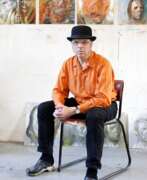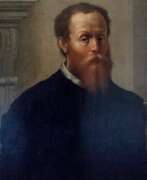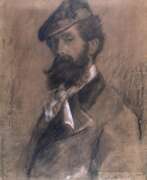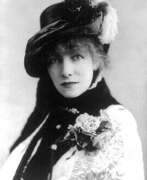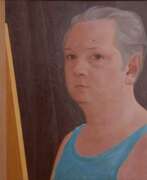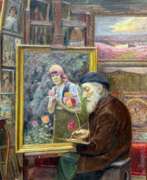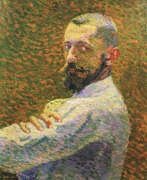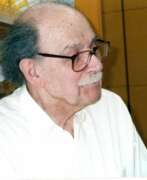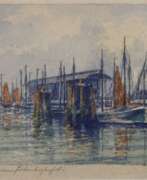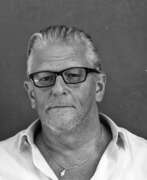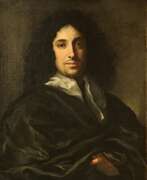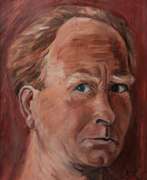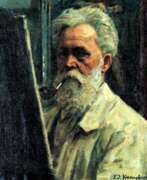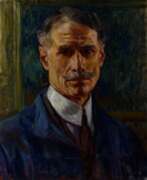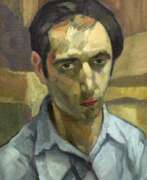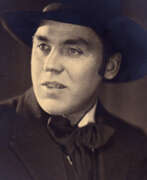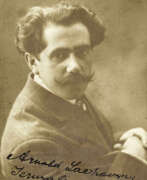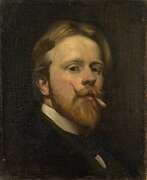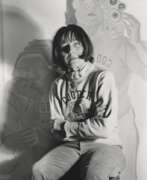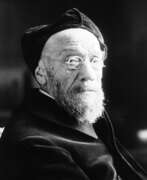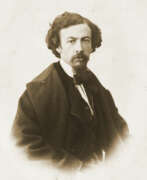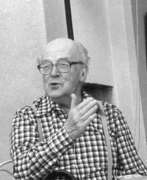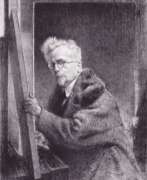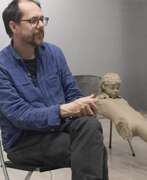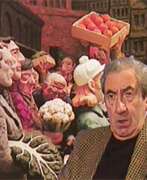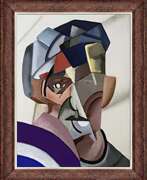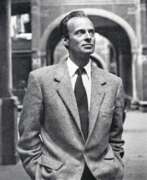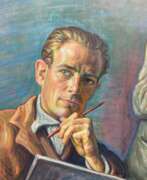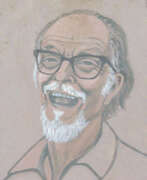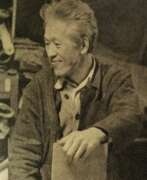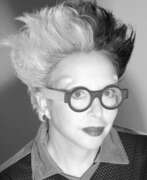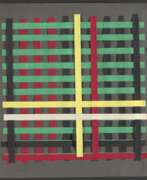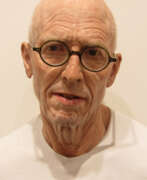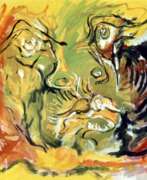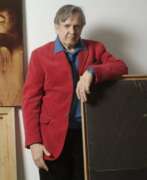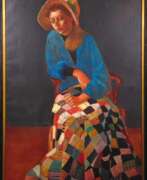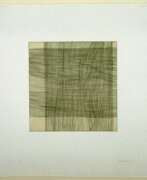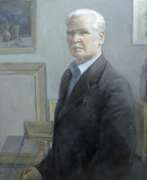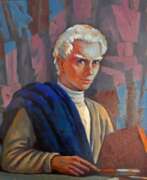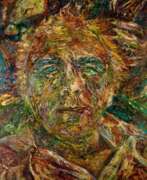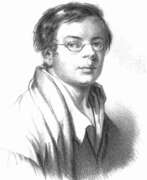Sculptors Self-portrait
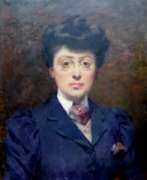

Louise Abbéma was a French painter, sculptor, and designer, celebrated for her work during the Belle Époque. Born in Étampes in 1853 into an affluent Parisian family, she became well known for her portraits, particularly of the famous actress Sarah Bernhardt, and for decorative panels commissioned for various public buildings in Paris and the Palace of the Governor in Dakar, Senegal.
Abbéma's art often depicted the upper echelons of French society and reflected the Impressionist style through her light and rapid brushstrokes. She was also notable for her involvement in the women's movement, where she contributed to the emerging image of the 'New Woman' by portraying androgynous figures and themes of intellectualism and freedom.
Among her many honors, Abbéma was awarded the Palme Academiques in 1887, nominated as the Official Painter of the Third Republic, and in 1906, she became a Chevalier of the Legion of Honour. Her works, such as "Lunch in the Greenhouse" and "Portrait of Sarah Bernhardt," have seen a resurgence in popularity as the contribution of women to historical art gains more recognition.
For those interested in the evocative and historically rich artworks of Louise Abbéma, consider subscribing to our updates. We'll keep you informed about new sales, auctions, and exhibitions featuring Abbéma's work, ensuring you're always connected to the latest offerings in the art and antique collectors' sphere.
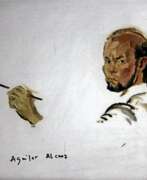

Frederico Aguilar Alcuaz is a Filipino abstract painter, sculptor and ceramist, and master tapestry artist.
He studied painting at the University of the Philippines' School of Fine Arts, then lived and worked both in the Philippines and Spain, and in Brno, Czech Republic, he worked extensively on tapestries.
Alcuaz has earned international acclaim with his vivid abstract works in various genres and techniques, and he has exhibited extensively internationally.


James Brown was an American-born painter active in Paris and Oaxaca, Mexico. He was most well known in the 1980s for his rough painterly semi-figurative paintings, bearing affinities to Jean-Michel Basquiat and East Village painting of the time, but with influences from primitive art and classical Western modernism. His work has taken on several styles over the years but maintains a hand-made look combining concerns of the modernist tradition with motifs and spiritual interests from tribal art. Much of his work is a non-realistic but contains depictions or signs of recognizable faces or objects. However, the line between representation and abstraction is often a difficult one in his work. Besides paintings Brown has also produced sculptures and series of prints at various points in his career, and in the 1990s started to heavily utilize collage.
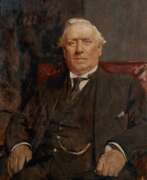

André Edmond Alfred Cluysenaar was a Belgian painter. He was especially known for portraits and female figures. He was member of the Cluysenaar family, descendant from a long line of architects who originated in Aachen. He received his first art lessons from his father, then studied with François-Joseph Navez. Initially, he worked as a sculptor, but devoted himself entirely to painting after 1902. He was firmly grounded in the romantic style at first; producing still lifes and genre scenes, but later turned to impressionism and painted mostly female figures, often semi-nude. He also executed monumental ceiling paintings for the City Hall in Saint-Gilles. During World War I, he lived in London where he established a reputation painting portraits of notable people, including the Royal Family, which were done in a more commercial style using Alfred Stevens as a model. Most of these portraits may be seen in the National Gallery.
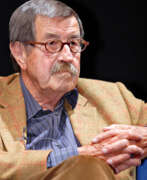

Günter Wilhelm Grass was a German novelist, poet, playwright, illustrator, graphic artist, sculptor, and recipient of the 1999 Nobel Prize in Literature.
Grass is best known for his first novel, The Tin Drum (1959), a key text in European magic realism. It was the first book of his Danzig Trilogy, the other two being Cat and Mouse and Dog Years. His works are frequently considered to have a left-wing political dimension, and Grass was an active supporter of the Social Democratic Party of Germany (SPD). The Tin Drum was adapted as a film of the same name, which won both the 1979 Palme d'Or and the Academy Award for Best Foreign Language Film. In 1999, the Swedish Academy awarded him the Nobel Prize in Literature, praising him as a writer "whose frolicsome black fables portray the forgotten face of history".


Oswaldo Guayasamín is an Ecuadorian painter, muralist and sculptor.
Oswaldo's father was an Indian, and the family was very poor, but the future artist was educated at the School of Fine Arts of Quito. Soon, literally in two years, he created a cycle of 103 paintings dedicated to the life of oppressed Indians in Latin America. Oswaldo Guayasamin also painted portraits of famous contemporaries, including Fidel Castro, whom he admired. He also created murals, frescoes, landscapes, and symbolic images.
The artist's works were exhibited in Paris, Moscow and in Leningrad, among other cities around the world, with amazing success. In 1957, at the Fourth Biennial in São Paulo, he was named the best South American artist.
Guayasamin was also a passionate collector. In 1978, the then famous artist donated to the State of Ecuador some 500 colonial paintings and sculptures, pre-Columbian archaeological sites, Goya and Picasso paintings that he had collected.
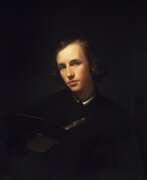

George Henry Hall was an American still-life and landscape artist. He studied art in Düsseldorf and Paris and he worked and lived in New York City, the Catskills of New York and in Europe. His works are in museum collections in the United States and Europe. Over the course of his career he sold 1,659 paintings.
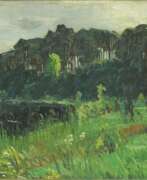

Johannes Friedrich Heinrich Hänsch was a German landscape painter and sculptor. Hänsch was born as the son of the sculptor Adolf Hänsch and his wife Johanna (nee Lehmann). He began his artistic training in his father's studio and initially continued it in the workshops of other sculptors before he decided to become a painter. On December 11, 1897, he began studying at the "Royal Academy of Fine Arts" in Berlin. As a freelance landscape painter, he was a member of the “Berlin Artists Association”. Since 1903, Hänsch has taken part in the Great Berlin Art Exhibition as well as in the exhibitions of the Association of Berlin Artists and in the Munich Glass Palace. His colorful painting showed a clear influence of Impressionism. He painted almost exclusively deserted landscapes from all parts of Germany. Paintings depicting human figures were a rare exception, but he did produce some mostly witty self-portraits.
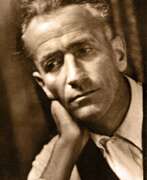

Louis Christian Hess was an Austrian painter and sculptor of the German Neue Sachlichkeit (New Objectivity) during the 1920s. In 1915 Hess exhibited his first works - drawings, tempera and engravings - at the "Turn und Taxishof Galerie" in Innsbruck. After the war, from 1919 to 1924 he attended the Bayerische Akademie der Bildenden Künste in Munich, in the class of Prof. C. Becker-Gundhal. In 1920 Hess attended the first collective exhibition "Ausstellung Junger Münchner - Graphische Kunstwerkstätten" in Munich presented by George Jacob Wolf. In 1928 he became close to Max Beckmann until his exile. Hess participated in the "Sommer Ausstellung des Deutschen Künstler Verbandes AUFBAU - E. V." in Munich and some of his paintings were shown in Berlin. In 1929 he joined the "Juryfreie" movement, becoming its leader until his ban in 1933 by the National Socialist regime. The artistic ostracism practised by Nazism moved Hess to a voluntary exile.
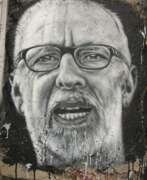

Jörg Immendorff was a German painter and sculptor, stage designer and decorator, and a member of the New Wild movement.
Immendorff painted in cycles that often lasted for years and were political in nature. His series of sixteen large paintings, Café Deutschland (1977-1984), is well known. In these colorful paintings, numerous disco lovers symbolize the conflict between East and West Germany.
Immendorff prepared several stage productions and designed sets for the operas Elektra and The Rider's Voyage. 25 of Immendorf's paintings were selected in 2006 for the illustrated Bible.
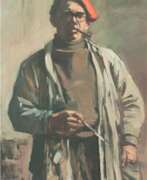

Hermann Kohlmann is a Swiss and German painter, sculptor and graphic artist. He painted landscapes, portraits and figures. Kohlmann studied at the Dresden Academy with Richard Müller and Max Feldbauer. In 1934 he received the Hugo Goepfert Prize. In 1937 he became known to the general public through an exhibition at the Dresden Art Salon Emil Richter. He also exhibited at the Great German Art Exhibitions in 1937 and 1938. After serving in the army and being in captivity, he again worked in Dresden. Many of his works show the reconstruction of the city. Kohlmann was a member of the Association of Visual Artists of the GDR. From 1970 to 1980 he worked as a restorer at the Museum of the History of the City of Dresden.
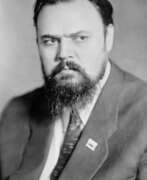

Aleksandr Ivanovich Laktionov (Russian: Александр Иванович Лактионов) was a distinguished Russian artist, celebrated for his intricate approach to painting and his ability to capture the essence of Soviet life through his art. Born in 1910, Laktionov's work spans a crucial period in Russian history, reflecting the cultural and social transformations of his time. He is renowned for his hyperrealistic paintings, which stand as a vivid chronicle of the era's ethos and its people's spirit.
Laktionov's artistry is marked by his meticulous attention to detail, a characteristic that has endeared him to art collectors and experts alike. His paintings are not just visual masterpieces; they are historical documents that offer a window into the daily lives of Soviet citizens, making him a vital figure in the study of Russian culture and art history. Among his most celebrated works is "A Letter from the Front," housed in the Tretyakov Gallery, Moscow. This painting is emblematic of Laktionov's ability to merge technical precision with deep emotional resonance, capturing the poignant realities of wartime Russia.
For collectors and experts in art and antiques, Laktionov's oeuvre represents an invaluable insight into the Soviet aesthetic and its underlying ideologies. His works are a testament to the enduring power of art to reflect and shape the narrative of its time. As interest in 20th-century Russian art continues to grow, Laktionov's paintings remain highly sought after, not only for their artistic merit but also for their historical significance.
We invite collectors and enthusiasts to sign up for updates related to Alexander Ivanovich Laktionov. Subscribing will keep you informed about new product sales and auction events featuring Laktionov's work. Rest assured, this subscription is focused solely on providing you with the latest opportunities to enhance your collection with pieces from one of Russia's most revered artists.
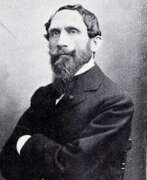

Jef Lambeaux, full name Joseph Marie Thomas Lambeaux, was a Belgian sculptor who combined realism and the Renaissance.
Lambeaux studied at the Academy of Fine Arts in Antwerp and was a member of the Van Beers clique, a group of eccentric young artists that also included the artists Piet Verhart (1852-1908) and Alexander Streiss (1852-1941). He later became a founder of the Brussels-based avant-garde group Les Vingt.
Lambeaux's sculptures have often provoked mixed reactions, but they are a reinterpretation of Renaissance and Baroque body image. Turning to classical themes in depicting nudes in motion, Lambeaux created many fountain figures, park sculptures and monuments. Among them is the Brabo Fountain, which has become a landmark in Antwerp. For the 1897 World's Fair pavilion, he created a large-scale marble bas-relief "Temple of Human Passion", which was condemned by the Catholic Church for being a "marble brothel".
The sculptor was known for his love of competitive wrestlers and boxers, and adored circus performances. Scenes of struggle and love are a constant theme of Lambeaux's work. His sculpture "Wrestlers" is also inspired by the popular Renaissance theme of two naked bodies straining all their strength in an extreme struggle.
In 1903, Jef Lambeaux became a member of the Royal Belgian Academy.
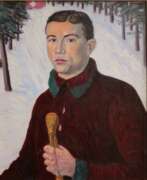

Jean Lehmann was a Swiss painter, graphic artist and sculptor.
Jean graduated from the Lucerne School of Applied Arts, studied at the Academy of Fine Arts in Venice and at the Academy of Fine Arts in Munich. Lehmann worked at the Glacier Gardens in Lucerne and as a guide in mountain hotels, so many of his paintings are mountain snow-covered landscapes. The artist was particularly fond of painting rustic landscapes, rural scenes of quiet life, and he also created portraits and still lifes in a wide variety of techniques. He also painted a series of watercolors and chalk drawings of Swiss traditional costumes.
Lehmann also worked in the advertising business, creating posters for sporting events and travel companies.
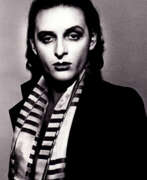

Urs Lüthi is a Swiss eclectic conceptual artist.
He graduated from the School of Applied Arts in Zurich and has experimented with various styles and techniques, including photography, sculpture, performance, silkscreen, video and painting.
Urs Lüthi is known for placing his body and alter ego at the center of his artworks, trying to understand himself and question reality.
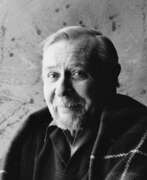

André-Aimé-René Masson was a French artist, celebrated for his profound influence on the world of modern art, particularly in painting and sculpture. Born in 1896, Masson's work is emblematic of the Surrealist movement, although his style evolved across different phases throughout his career. His ability to fuse dream-like imagery with abstract forms set him apart from his contemporaries, making him a pivotal figure in the development of Surrealism and beyond.
Masson's art is characterized by its dynamic forms and the integration of automatic drawing, where the unconscious mind is allowed to express itself without rational oversight. This technique not only foregrounded Surrealism's fascination with the subconscious but also highlighted Masson's unique ability to capture the complexity of human emotion and thought on canvas. His works, such as "The Metamorphosis of the Lovers" and "Battle of Fishes," are not just visual experiences but portals to the intricate layers of the psyche, showcasing his mastery over both form and content.
Notably, André-Aimé-René Masson's contributions extend beyond individual creativity; his works are housed in prestigious museums and galleries worldwide, including the Museum of Modern Art in New York and the Centre Georges Pompidou in Paris. These institutions recognize Masson's art not merely as aesthetic achievements but as cultural landmarks that continue to inspire and provoke. His legacy persists, offering rich insights into the intersections of art, psychology, and philosophy.
For collectors and experts in art and antiques, André-Aimé-René Masson's oeuvre represents a fascinating exploration of the Surrealist movement and its enduring impact on modern and contemporary art. His innovative approach to painting and sculpture invites ongoing discussion and appreciation among enthusiasts and scholars alike. We invite you to sign up for updates on new product sales and auction events related to André-Aimé-René Masson, ensuring you stay informed about opportunities to engage with the remarkable legacy of this pivotal artist. This subscription is your gateway to the forefront of art collection, focusing exclusively on Masson's influential body of work.


Mattia Moreni is an Italian painter and sculptor, a representative of the abstract trend in Italian art.
The artist is interesting because he went through all the significant phases in the art of the 20th century. Beginning with figurative fovea and expressionism, he turned to post-cubism and then to abstract-concrete forms. Later Moreni turns to informal and neo-expressionism. Decay, death and splendor become the themes of his work. After anthropoid watermelons, the decline of the human species is captured by the artist through other images: sterile female macros and sets of symbols, including the relationship between humanoid computer and humanoid computer.
Moreni's paintings have received wide international acclaim.




Salomé (born as Wolfgang Ludwig Cihlarz) is a German artist. His paintings are in renowned museums and collections all over the world. Salomé became known as one of the members of the art group Junge Wilde (Wild Youth) or Neue Wilde (New Wild Ones). He also is recognized as a sculptor and Punk singer.
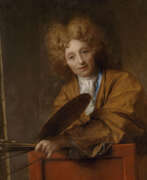

Jean-Baptiste Santerre was a French painter and draughtsman of the Style Louis XIV, known for his history paintings, portraits, and portrait-like genre subjects. Considerably influenced by Italian masters of the Bolognese school as well as his French contemporaries, Santerre nonetheless made an original contribution in his art, being among the first French painters to bring Netherlandish influences.
After achieving initial success as a portrait painter by the late 1690s, Santerre began to branch out into the fields of genre painting and, in which he combined the fantasy portrait of Northern tradition, as seen in the art of Rembrandt and Gerrit Dou, with the allegorical portrait, then fashionable in France. At the same time, he also painted history paintings and altarpieces of biblical and religious subjects, suffused with a strong erotic character.
Santerre's work brought him a controversial reputation, in light of his association with the French Regency era; it was during the 19th and 20th centuries when it met a broader appreciation. Santerre is regarded as a precursor of the Rococo era painting, as well as of both Neoclassical and Romantic painting, and was said to be an influence on subsequent generations of artists during the said eras.
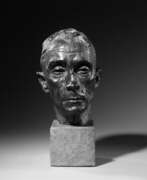

Richard Scheibe was a German artist primarily remembered as a sculptor. He trained as a painter, and taught himself to sculpt beginning in 1906. From 1925-1933 he taught at the Städelsches Kunstinstitut in Frankfurt am Main. He was dismissed from teaching when the Nazis seized power but was reinstated in 1934. He received various recognitions during the Third Reich, including the Goethe-Medaille für Kunst und Wissenschaft and placement on the Gottbegnadeten list. After World War II he continued to sculpt, including a figurative piece for the Memorial to the German Resistance. His work was also part of the sculpture event in the art competition at the 1928 Summer Olympics.
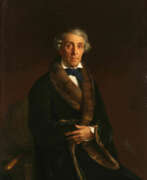

Fyodor Petrovich Tolstoy (Russian: Фёдор Петрович Толстой) was a Russian sculptor, painter, and medallist, renowned for his contributions to Russian classicism and romanticism. Born in Saint Petersburg in 1783, he became a prominent figure in the Russian art world. As a vice-president of the Imperial Academy of Arts, Tolstoy produced significant works, including medallions commemorating the Patriotic War of 1812.
Tolstoy's artistic style is characterized by its meticulous detail and classical influence. His works, such as the intricate medallions and bas-reliefs, often depict historical and allegorical scenes. These pieces are celebrated for their technical precision and emotional depth, embodying the spirit of the era.
Many of Tolstoy's creations are housed in prestigious collections, including the State Hermitage Museum and the State Tretyakov Gallery. His legacy continues to inspire and influence Russian art and culture, making him a significant figure in the history of Russian fine arts.
Subscribe for updates on new product sales and auction events related to Fyodor Petrovich Tolstoy. Stay informed about the latest opportunities to acquire pieces of his artistic legacy.


Giulio Turcato was an influential Italian painter, recognized for his contributions to both figurative and abstract expressionist art. Born in Mantua in 1912, Turcato's early artistic journey led him to the Accademia di Belle Arti di Venezia. His career path took him through various Italian cities, culminating in a significant move to Rome in 1943, where he immersed himself in the Resistance and the Communist Party.
Giulio Turcato's work, characterized by a unique blend of political engagement and artistic innovation, stood at the crossroads of critical movements and artistic groups of his time. He was a key member of Forma 1, a group advocating Marxist-leaning abstract art, and the Fronte Nuovo delle Arti. His reluctance to fully embrace either politically engaged art or formalist abstraction marked him as a distinctive voice in the Italian art scene.
His artistic oeuvre includes participating in the Venice Biennale and showcasing his work at prominent venues such as the MoMA in New York and the Staatsgalerie Moderner Kunst in Munich. Turcato's exploration of materials, evident in his "Lunar Surfaces" series, showcased his innovative approach, incorporating elements like sand and foam to create textured, dynamic compositions.
For art collectors and enthusiasts, Giulio Turcato's work offers a deep dive into a pivotal moment in Italian art history, reflecting a complex interplay of political, social, and artistic narratives. To stay updated on new sales and auction events related to Giulio Turcato's art, consider signing up for updates, ensuring you remain informed about opportunities to engage with the legacy of this pivotal artist.
